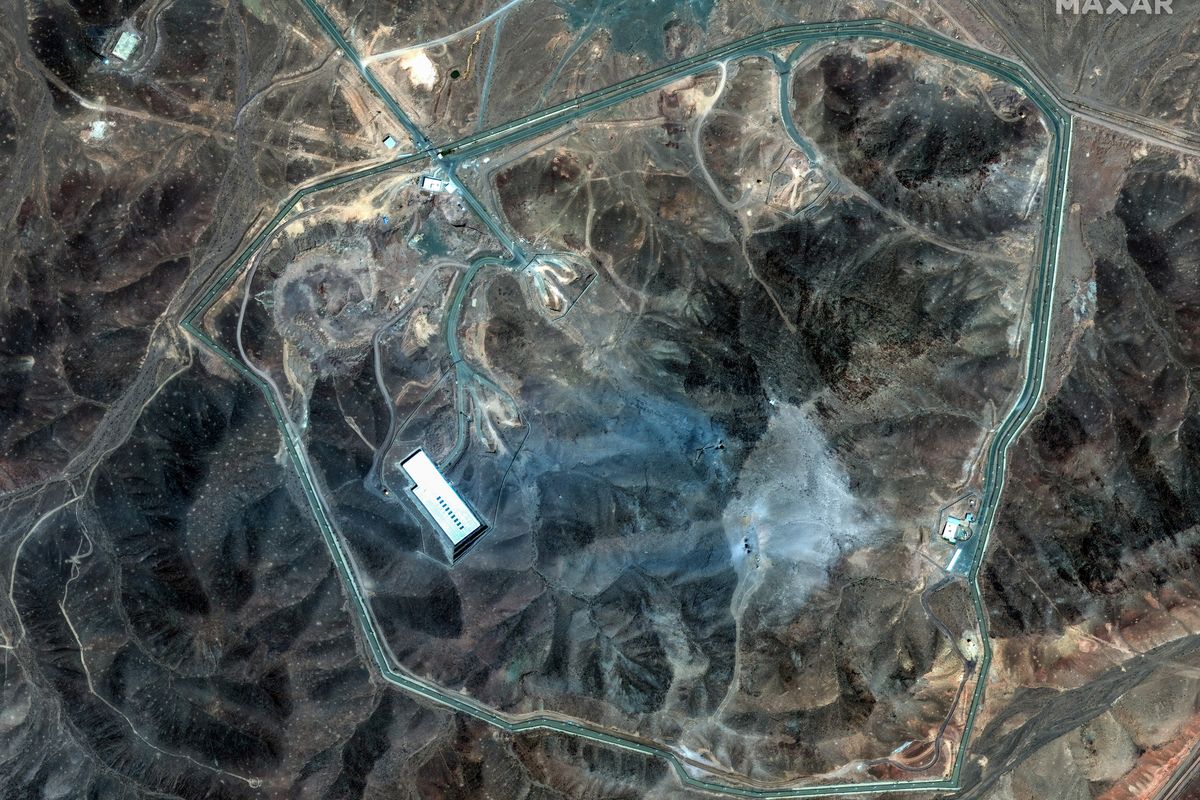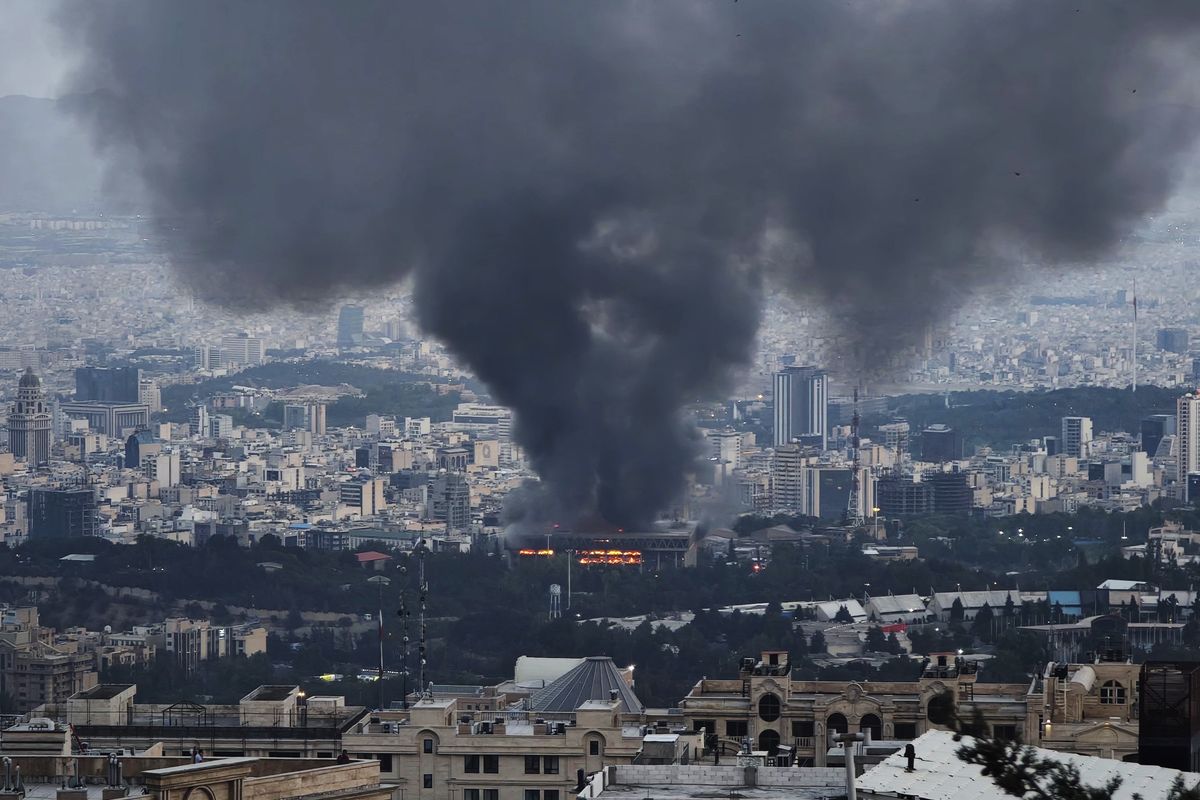Pulitzer Prize Winning Journalist Walter Pincus is a contributing senior national security columnist at The Cipher Brief. Pincus spent forty years at The Washington Post, writing on topics from nuclear weapons to politics. He is the author of Blown to Hell: America’s Deadly Betrayal of the Marshall Islanders (releasing November 2021)
OPINION — On September 15, North Korea and South Korea engaged in a highly unusual, same-day exchange of missile test launches that illustrates the danger of the peninsula’s current arms race.
Earlier that day, two North Korean railroad boxcars and a locomotive backed out of a rail tunnel in South Pyongan Province and stopped. The second boxcar’s sliding-door roof opened lengthwise revealing two side-by-side erector/launcher mechanisms, each loaded with a KN-23 short-range ballistic missile.
At the same time, two sets of leveling jacks at each end of the box car went down to stabilize the boxcar for a launch.
One launcher rose up, and at 12:38 p.m., launched a KN-23 missile. At 12:43 p.m. the second missile was launched. Both KN-23s traveled roughly 500 miles and landed in the Korea Strait, the sea passage between North Korea and Japan.
The next day, North Korea’s Chief of the General Staff Marshall Pak Jong Chon, announced that the purpose of the test was to confirm “the practicability of the railway mobile missile system deployed for the first time for action.” Later that day, the North Koreans released a video of the boxcar launches.
This was the first time the KN-23, which was already considered road mobile, was fired from a railroad car. What’s more significant, according to some analysts, is that it indicates that the North Koreans may be on their way to a rail mobile intercontinental ballistic missile (ICBM), which would be more survivable than a fixed silo ICBM.
However, back on September 15, just hours after the second North Korean missile was launched, South Korea’s Presidential Blue House announced its first underwater launch of a SLBM (sub-launched ballistic missile) from a submarine.
Engage personally with Cipher Brief Experts on the North Korea nuclear issue at The Cipher Brief Threat Conference in October. If you are an actively working in the national security field, we invite you to apply to attend the upcoming conference. Seats are limited. Apply today.
With President Moon Jae-in watching, the Hyunmoo 4-4 missile traveled about 300 miles after being fired from the Dosan Ahn Changho class submarine, which had been commissioned just a week earlier.
The South Koreans say they plan to build 10 such diesel-powered subs which will have six vertical- launch system tubes for either cruise or ballistic missiles.
"Possessing an SLBM has significant meaning in securing deterrence against omni-directional threats, and it is expected to play a key role in building self-defense capability and peace on the Korean peninsula," Moon's office said in a statement after the test.
Although both South Korea and North Korea have displayed and launched missiles from underwater platforms, the Pyongyang government has never done so from a submarine. Thus, the Seoul government becomes only the eighth country to do so and the first non-nuclear one. The others are the U.S., Russia, Great Britain, France, China, Israel, and India.
"Enhancing our missile capability is exactly what's needed as deterrence against North Korea's provocation," Moon himself said, while stressing that the SLBM test was pre-planned and not a response to North Korean launches, which he says he heard about while awaiting the sub launch.
This Korean arms race has gained momentum since the unsuccessful, February 2019, Hanoi summit between former-President Trump and North Korean Leader Kim Jong-un.
Since then, with real negotiations stymied, North Korea went quiet, although it continued producing highly-enriched uranium and apparently, more nuclear weapons.
At the same time, President Moon, who had led the way in seeking talks with the North and promoted the Trump-Kim summits, has gone military, increasing his country’s annual defense budget by some 7 percent, more than double the growth of his predecessor. The result has been not only the new submarines, but also a five-year plan for a light aircraft carrier, new fighter aircraft, plus missile systems and satellites.
When President Biden took office, it was expected that Kim would take some new military step.
In a January 9, 2021, speech to the Congress of his Workers Party, Kim revealed his own plans for a nuclear-powered submarine and the development of smaller, more adaptable nuclear warheads. He also said he hoped that taking such steps would “drive diplomacy in the right direction and guarantee its success” in achieving “peace” on the Korean Peninsula.
It was not until March 25, that North Korea announced its first missile tests since Biden took office. Two “newly-developed, new-type tactical guided missiles,” KN-23s, had been fired from mobile launchers. The action drew no response from the Biden administration.
Instead, however, on May 21, Biden met at the White House with President Moon and announced that long-standing guidelines that restricted the payloads and ranges of South Korea’s ballistic missile program had been terminated as both Presidents agreed to work together to solve the North Korean nuclear threat.
Go beyond the headlines with expert perspectives on today’s news with The Cipher Brief’s Daily Open-Source Podcast. Listen here or wherever you listen to podcasts.
This month, North and South Korea increased their weapons testing at the same time both Koreas were holding talks with allies about working out their differences.
On the weekend of September 11-12, North Korea tested newly-developed, long-range cruise missiles, hitting targets over 900 miles away from launching sites. The launches took place two days before Chinese Foreign Minister Wang Yi was scheduled to meet with his South Korean counterpart, Chung Eui-yong, in Seoul to discuss bilateral relations and stalled nuclear disarmament talks.
That meeting occurred on September 15, the day both Koreas held their competing missile tests.
What has emerged from this tit-for-tat testing activity?
In his speech last Tuesday to the United Nations General Assembly, President Moon re-raised his proposal that the U.S., China, and the two Koreas “come together and declare that the war on the Korean Peninsula is over.” He added, “When the parties involved in the Korean War stand together and proclaim an end to the war, I believe we can make irreversible progress in denuclearization and usher in an era of complete peace.”
Last Friday, Chairman Kim’s sister, Kim Yo-jong, spokeswoman on U.S. and South Korean relations, issued a statement saying, North Korea was willing to restore “constructive” talks with South Korea, but with conditions. “What needs to be dropped,” she said, “is the double-dealing attitudes, illogical prejudice, bad habits and hostile stand of justifying their own acts while faulting our just exercise of the right to self-defense.”
On Saturday, she offered a slightly different statement: “Only by maintaining fairness and respect for each other can the two Koreas resolve other relational problems, like declaring the end of war at the proper time, re-establishing a North and South liaison office, and arranging inter-Korean summits between the two leaders through constructive discussions.”
She added, however, that she was giving her “personal opinion.”
What happens next is anyone’s guess.
The Cipher Brief hosts private briefings with the world’s most experienced national and global security experts. Become a member today.
North Korea has been hit by the coronavirus pandemic, its economy is suffering, but nonetheless, its nuclear program “goes full steam ahead with work on plutonium separation, uranium enrichment and other activities,” said U.N. atomic watchdog chief Rafael Grossi on September 20, at his agency's annual meeting. In August, Grossi issued a report that said North Korea’s Pyongyang nuclear reactor, believed to have produced plutonium in the past for nuclear weapons, appeared to have been restarted.
“The absence of North Korean fireworks does not mean a crisis is not brewing,” Victor Cha, former Director for Asian Affairs in the George W. Bush National Security Council, wrote after the September 15, missile tests. In a Washington Post opinion piece, he said additional sanctions “might make for good politics in Washington, but it is likely to have little effect.”
Instead, Cha, now Director of the Asian Studies program at Georgetown University’s School of Foreign Service and senior advisor at the Center for Strategic and International Studies, wrote, “The only answer to stemming the threat is diplomacy.”
Crisis diplomacy would be needed, he said, “if North Korea appears to be laying a path to a major provocation such as another nuclear test, a long-range ballistic missile test (with multiple reentry vehicles), or a sea-launched ballistic missile test.”
On the other hand, Cha suggested, “The United States and its allies could consider negotiating some form of humanitarian assistance for North Korea to address its declining domestic situation…It could stave off escalating provocations, as Kim is unlikely to act out while in dialogue with the United States…and just might create some momentum for further diplomacy.”
Cha’s views reminded me of the Cold War experience, where Washington and Moscow were in an arms race and closely followed each other’s weapons testing – much as Seoul and Pyongyang are doing now.
Eventually, both sides turned to diplomacy after realizing as their modern armaments grew, how deadly it would be if any of those weapons were actually used.
Read more expert-driven national security insights, perspective and analysis in The Cipher Brief











